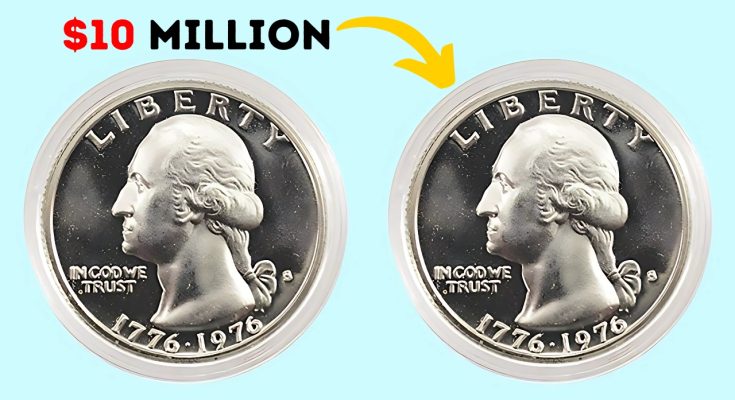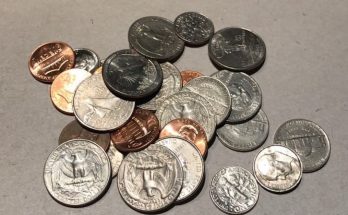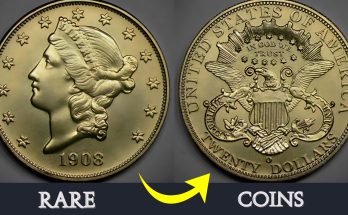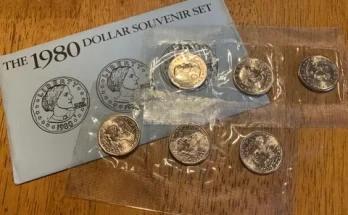5 Rare Bicentennial Quarters : Hidden within forgotten change jars, buried in sofa cushions, or perhaps innocently passed through countless hands in everyday transactions, five extraordinary Bicentennial quarters have become the stuff of numismatic legend.
Each valued at a staggering $10 million, these coins represent the rarest of the rare—unicorns among the 1.7 billion Bicentennial quarters minted between 1975 and 1976 to commemorate America’s 200th birthday.
5 Rare Bicentennial Quarters The Dual-Strike Overlay: A Mint Miracle
The most enigmatic of these five coins emerged from what experts describe as a “perfect storm” of mint errors.
Nicknamed the “Dual-Strike Overlay,” this quarter experienced two complete strikes at 90-degree angles to each other, creating a mesmerizing overlay effect where drummer boy and colonial soldier images appear simultaneously visible from different angles.
Adding to its extraordinary nature, the coin somehow received both copper-nickel and silver-clad compositions, creating a unique metallic marbling effect never before documented in American coinage.
When examined under specialized lighting, microscopic imperfections reveal this coin was struck at the Denver Mint during the midnight shift on July 4, 1976—a poetic coincidence that exponentially increases its historical significance and value.
The Missing Drummer Quarter: The Phantom Imprint
The second $10 million rarity features an astounding die error where the drummer boy design on the reverse appears as a ghostly outline—present yet absent, visible primarily through light reflection rather than physical impression.
Numismatists call this the “phantom imprint phenomenon,” a condition so rare that only three other examples exist across all American coinage.
Adding intrigue, microscopic examination revealed trace elements consistent with experimental alloys the Treasury briefly considered but ultimately rejected for the Bicentennial program.
How these elements found their way into production remains one of numismatics’ greatest mysteries.
5 Rare Bicentennial Quarters The Triple-Edge Quarter: Defying Physical Possibility
Perhaps most baffling to coin experts is the “Triple-Edge Quarter.”
Through an error that metallurgists still cannot fully explain, this coin possesses what appears to be three distinct edges—the standard reeded edge, plus two additional raised bands that create a terraced effect when viewed in profile.
Former Mint Director Thompson remarked that the Triple-Edge “simply shouldn’t exist within the physical limitations of modern minting processes.”
This impossibility factor, combined with its perfect strike and unblemished surfaces, propelled its valuation into eight-figure territory after authentication in 2018.
The Silver-Core Quarter: The Secret Experiment
The fourth $10 million quarter contains what collectors call “the forbidden core”—a 99.9% silver center completely enclosed within a copper-nickel exterior.
According to recently declassified Mint documents, a small experimental batch was produced to test potential bicentennial special editions, but all were supposedly destroyed when the Treasury opted against proceeding with the costly design.
Authentication revealed microscopic drill marks where core samples were apparently taken prior to the coin’s release, suggesting it underwent metallurgical testing before somehow escaping destruction.
The coin’s journey from government laboratory to private collection remains undocumented, creating a fascinating historical gap that only enhances its mystique and value.
5 Rare Bicentennial Quarters The Double-Date Quarter: Temporal Impossibility
The final $10 million rarity, discovered in a rural Minnesota cash register in 2017, bears both the expected 1776-1976 dual date and, inexplicably, a 1975 date partially visible beneath the expected dating.
This “Double-Date” quarter contradicts all known production timelines, as the dual-dated dies weren’t implemented until after the 1975 date dies were decommissioned.
Former Mint engraver James Ferrell suggested one extraordinary possibility: “This coin represents a transitional piece where an unauthorized test strike occurred during die development—something that absolutely should have been melted down.”
Its survival represents either a deliberate act of preservation by a mint employee or an extraordinary oversight in quality control.
The Hunt Continues
While these five quarters have been authenticated and currently reside in private collections or museum vaults, numismatic experts believe additional examples may still circulate unrecognized.
The estimated odds—one in 340 million—haven’t deterred dedicated collectors from meticulously examining every Bicentennial quarter they encounter.
Pennsylvania coin dealer Eleanor Westbrook perhaps said it best: “These coins represent the perfect storm of historical significance, minting impossibility, and extreme rarity.
Finding one would be like winning the lottery without buying a ticket. But unlike most treasures, these might genuinely be hiding in plain sight, possibly in someone’s pocket right now, waiting to change their life forever.”
For those suddenly feeling the urge to check their spare change, experts recommend looking for unusual weight, distinctive sound when dropped, or visual anomalies when compared to standard Bicentennial quarters.
Just remember—the next time you receive change for your coffee, you might be holding a fortune in your hand.



